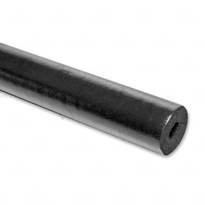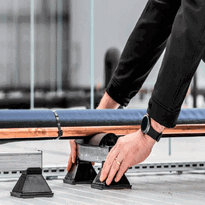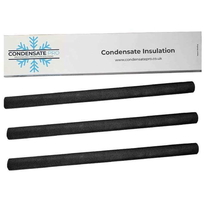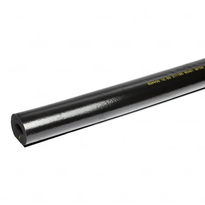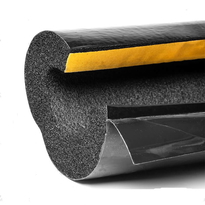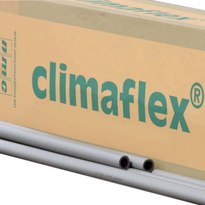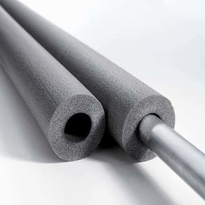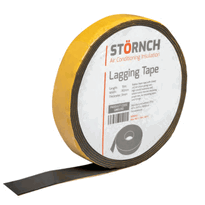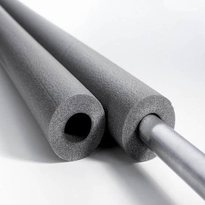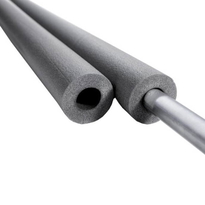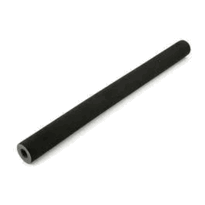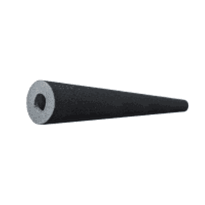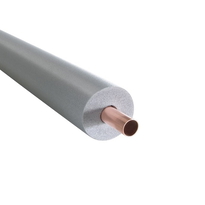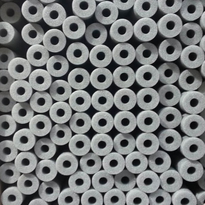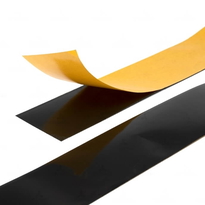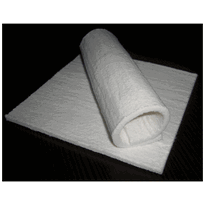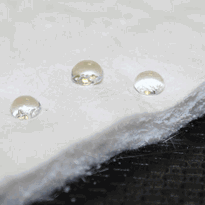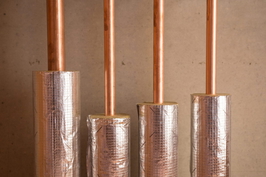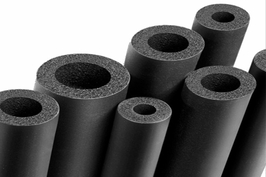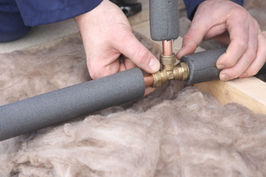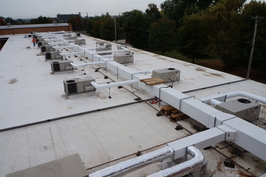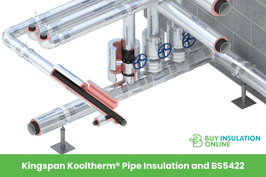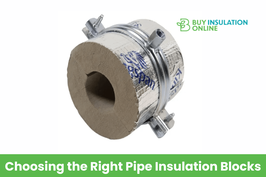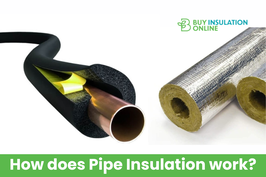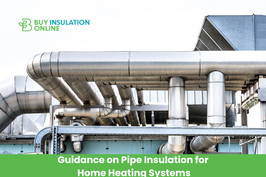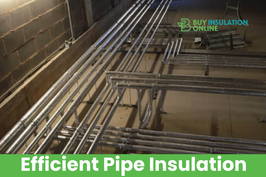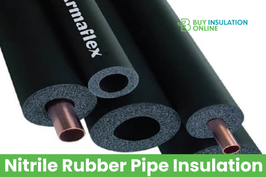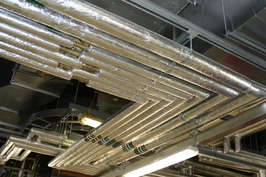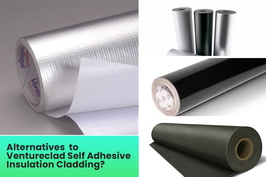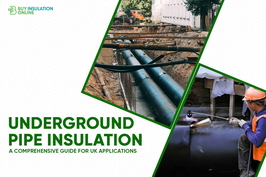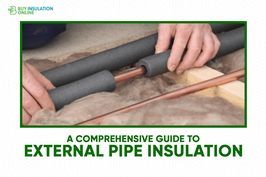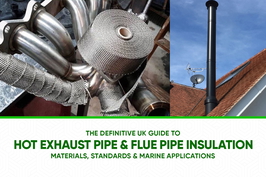External Pipe Covering
External pipe coverings play a crucial role in safeguarding pipelines from various environmental factors, minimising heat loss, and preventing corrosion. Common materials utilised include polyethylene, foam insulation, rubber, fibreglass, and metal jackets such as aluminium or stainless steel. The selection of the appropriate material is vital and depends on the specific environment and type of pipe.
These coverings enhance both durability and efficiency. Coatings like epoxy or polyurethane can provide additional layers of protection, further extending the lifespan of the pipes.
Installation requires careful surface preparation and secure attachment to ensure optimal performance. Regular inspections and maintenance are essential for sustaining long-lasting functionality.
Delving deeper into this subject can uncover effective techniques that maximise the longevity and performance of pipe systems, ensuring they operate efficiently for years to come.
Types of Pipe Covering Materials
There are various types of pipe covering materials utilised to insulate and protect external pipes, each providing distinct advantages depending on the application.
Polyethylene is lightweight and highly flexible, making it straightforward to install around pipes, particularly in cooling systems. Its moisture resistance helps to prevent corrosion and reduces maintenance expenses.
Foam-based insulations, such as polyisocyanurate and polyurethane, excel at thermal insulation, making them suitable for high-temperature industrial pipes or chilled water lines.
Rubber materials, like nitrile rubber, offer a moisture barrier and are resistant to mould and microbes, making them ideal for both heating and cooling pipes.
Fibreglass and mineral wool insulations are preferred for high-temperature and harsh environments, providing durability, fire resistance, and sound insulation.
Each material plays a crucial role in enhancing the longevity and efficiency of piping systems. Furthermore, the selection of a specific covering depends on environmental exposure and thermal requirements.
Benefits of External Jacketing Systems
External jacketing systems provide numerous advantages by enhancing the overall performance of piping systems. They significantly improve energy efficiency by minimising heat loss, which reduces energy consumption and costs. This assists in maintaining process temperatures, thereby accelerating operations and lessening environmental impact.
Jacketing also offers protection to pipes against environmental factors such as moisture, UV rays, and physical damage. This prolongs the lifespan of equipment and helps prevent corrosion.
Furthermore, it enhances safety by covering hot or sharp surfaces, thereby reducing the risk of injury and creating a more comfortable working environment.
Additionally, these systems simplify maintenance, making inspections and repairs more straightforward and less disruptive.
Common Coatings for Pipe Protection
Various coatings are utilised to protect pipes from corrosion and damage, each offering specific advantages suited to different environments.
Fusion-Bonded Epoxy (FBE) coating forms a durable, chemical-resistant layer, making it ideal for underground and high-temperature pipes due to its strong adhesion and long-term protection.
Polyurethane coatings are flexible and impact-resistant, which makes them suitable for areas where pipes experience mechanical stress or movement.
Polyethylene (PE) and Polypropylene (PP) coatings, particularly in multi-layer systems, provide excellent moisture resistance and safeguard against impacts, making them suitable for demanding environments such as oil and gas pipelines.
Coal Tar and Coal Tar Epoxy coatings create thick barriers for submerged or buried pipes; however, their use is limited by environmental considerations.
Zinc coatings, such as galvanisation, establish a sacrificial metal layer that protects pipes exposed to air, water, or variable weather conditions.
Selecting the Right Jacketing Material
Choosing the right jacketing material is essential and depends on several factors, such as the environment, the pipe’s location, and the level of protection required.
Various materials are tailored to meet specific needs:
Metal jackets, including aluminium and stainless steel, provide robust protection against moisture, heat, and corrosion.
Aluminium is lightweight and resistant to corrosion, making it a suitable option; however, it may not withstand high heat as well as other materials.
Stainless steel boasts excellent fire and corrosion resistance, making it ideal for demanding environments, although it tends to be more expensive.
Plastic jacketing offers flexibility and UV resistance, making it an excellent choice for outdoor applications where weatherproofing is crucial.
Selecting the right material also involves considering its durability and resistance to environmental factors, ensuring the insulation system performs reliably over its service life.
Taking these options into consideration aids in selecting a jacketing material that aligns with the pipe’s environment and expected lifespan.
Choosing the appropriate material not only safeguards the pipes but also contributes to a well-maintained and cohesive system.
Installation Techniques for External Coverings
Proper installation of external pipe coverings begins with thorough surface preparation, ensuring that pipes are clean and dry to prevent future issues. Proper insulation helps in safeguarding pipes from environmental damage and reduces heat loss. Securing the coverings correctly is essential, utilising tapes, fasteners, or screw fittings to maintain weather resistance and durability. Regular inspection and maintenance are crucial to confirm that the coverings remain in good condition and continue to protect the pipes effectively. Attention to detail during installation and ongoing upkeep will ensure the longevity and performance of the external coverings, safeguarding your pipes from environmental factors.
Surface Preparation Steps
Effective surface preparation is crucial for ensuring that external pipe coverings adhere properly and perform reliably over time. Adequate cleaning, environmental checks, and surface roughening create the ideal conditions for successful coating application.
Consider these essential steps:
Measure and record surface and air temperatures, avoiding moist conditions such as rain or high humidity.
Thoroughly clean surfaces using methods like pressure washing or abrasive techniques to eliminate dirt, rust, and oils.
Roughen smooth surfaces through sanding or blasting to enhance mechanical bonding.
Mask areas such as threads and joints to prevent coating overspray and ensure a neat finish.
Securing Coverings Properly
Properly securing external pipe coverings is essential to ensure they remain in place and provide lasting protection. Insulation materials such as foam tubing are typically secured with adhesive backing, while additional taping at intervals helps to prevent shifting. This prevents damage from environmental factors, ensuring the longevity of the insulation system. Fibreglass wraps are sealed with tape at the ends and overlaps, ensuring that the insulation remains tight. Foam cladding is fastened with screws or clips, particularly around laps and overlaps, to prevent lifts caused by adverse weather conditions. For pipes with bends or complex shapes, flexible rubber foam sticks and foam connectors are utilised, secured with tape or fasteners. Accurate measurements and precise cuts are crucial for achieving a snug fit, while mechanical fasteners or clamps provide added stability, especially for larger pipes. Employing proper securing techniques not only protects pipes from environmental damage but also helps maintain effective insulation, ensuring that systems function efficiently throughout their lifespan.
Inspection and Maintenance
Before installing external pipe coverings, it's essential to conduct a thorough inspection of the pipe surfaces and ensure they're properly cleaned. This process guarantees good adhesion of coatings and helps prevent future complications. Proper insulation, such as Armaflex or Climaflex, should be applied after inspection to protect against freezing and temperature fluctuations. Regular inspection is crucial for maintaining pipe integrity, identifying issues early, and avoiding expensive repairs. When carrying out maintenance, consider the following steps:
Examine the pipe surface for any signs of rust, corrosion, or damage.
Clean the surfaces meticulously using brushes or suitable chemical cleaners to remove debris and oils.
Remove any loose material that may hinder the installation of insulation or coverings.
Reapply protective coatings or vapour barriers as necessary to ensure effective insulation and prevent moisture accumulation.
Additionally, make sure to check the pipe's insulation status regularly, especially before cold seasons, to ensure it remains effective against the climate.
Consistent inspection and diligent maintenance significantly extend the lifespan of pipes and ensure that external coverings continue to provide effective protection.
Maintenance and Inspection of External Coatings
Regular inspection of external coatings is vital to identify signs of visual damage, such as cracks, blisters, or foreign inclusions, which may lead to deterioration. Monitoring for moisture penetration is essential to prevent corrosion beneath the coating, particularly after adverse weather conditions or handling. When damage is detected, prompt repair techniques using approved materials are crucial to ensure the pipe's long-term protection. Coating inspections should include chloride testing, surface profile measurement, and film thickness tests to accurately assess coating integrity.
Visual Damage Signs
Visual inspection is a vital step in identifying signs of damage to external pipe coatings. Recognising these signs early helps prevent corrosion and expensive repairs. Regular visual checks are necessary to detect issues before they worsen, saving time and costs. Common visual damage signs include:
Cracking or blistering, which reveal environmental stress or trapped gases weakening the coating.
Discolouration or fading, indicating chemical or UV damage that reduces protective qualities.
Peeling or flaking, exposing metal and risking corrosion due to improper adhesion or ageing.
Visible rust or corrosion spots, showing where moisture has penetrated and initiated rust.
Routine checks enable maintenance teams to act swiftly, ensuring pipeline integrity and safety. Early detection of these signs can significantly extend the lifespan of the pipeline. Noticing these signs promptly contributes to maintaining the pipeline's longevity and prevents more serious damage in the future.
Visual inspection fosters a sense of belonging by supporting a team dedicated to safety and reliability.
Moisture Penetration Checks
Moisture penetration checks are crucial for maintaining the integrity of external pipeline coatings. These assessments help identify any ingress of water that could result in corrosion or failure of the coating.
The ASTM G-9 standard evaluates water penetration directly, providing insights into how effectively the coating resists moisture intrusion. Additionally, water vapour transmission tests, such as ASTM F-1249, measure the amount of moisture that can permeate through the coating, where lower values indicate superior protection.
Water absorption tests, including ASTM G-62, assess the quantity of moisture the coating absorbs, with a target of less than 0.2% absorption rate. Holiday or pinhole inspections employ voltage to detect discontinuities that may expose the pipe to moisture.
Regular checks are essential to ensure the coating remains effective, safeguarding against hidden damage and offering reassurance that the pipeline is secure within its environment.
Coating Repair Techniques
Coating repair techniques are vital for preserving the protection and longevity of external pipelines. They play a crucial role in preventing leaks, corrosion, and structural damage, ensuring that systems remain reliable and safe.
Here are several key methods:
Epoxy resin coatings form a hard, waterproof seal that safeguards against future damage. Adequate cleaning and surface preparation are essential to achieve a robust bond.
Composite wrap systems utilise epoxy fillers and fabric to reinforce pipes, particularly in challenging environments such as underwater or cold conditions.
External clamps offer quick, temporary or permanent solutions for damaged areas, providing immediate protection.
Welded repairs can restore mechanical strength, though they necessitate skilled labour and appropriate equipment for successful implementation.
Choosing the right technique is dependent on the type and location of the damage, as well as the surrounding conditions. This ensures repairs are long-lasting and effective, promoting a sense of safety and community belonging.
Environmental Factors Affecting Covering Choices
Environmental factors significantly influence the selection of appropriate coverings for pipes.
Extreme temperatures, whether hot or cold, can harm insulation materials, leading to cracks and diminished efficiency. Regular thermal cycling due to temperature fluctuations can result in material fatigue and eventual failure, necessitating the use of thicker or specialised insulations.
Prolonged exposure to UV radiation from sunlight can cause polymers and foams to degrade, making it crucial to choose UV-resistant coatings or materials for outdoor applications.
High levels of humidity can result in moisture absorption, which weakens insulation and promotes corrosion. Furthermore, environmental chemicals and pollutants, such as salt spray or industrial emissions, can degrade coverings over time.
Selecting materials that can withstand these environmental challenges is essential for ensuring the longevity, durability, and performance of pipe insulation in a variety of settings.
Drainage and Moisture Control Strategies
Proper drainage and moisture control are essential in preserving the integrity of pipe coverings. These strategies prevent water from penetrating insulation or leading to corrosion.
Effective methods include:
Designing coverings with drip edges, slopes, or shields to direct water away from pipes.
Ensuring that backfill material surrounding buried pipes is well-drained and moisture-resistant.
Avoiding soil compaction near pipes, as this can trap moisture against insulation.
Conducting regular inspections to identify and rectify leaks or breaches in the protective system.
Implementing these practices helps minimise prolonged water exposure and prevents moisture accumulation that could compromise pipe coverings.
Effective drainage fosters the longevity of pipes, contributing to a safer environment for both homeowners and professionals. By keeping water away, we enhance community care for shared infrastructure.
Enhancing Longevity With Proper External Coverings
External coverings play a crucial role in extending the lifespan of pipes by providing protection against damage and environmental stressors. Suitable coverings guard against corrosion, physical wear, and UV damage, helping pipes perform reliably over time.
For instance, copper pipes naturally develop a protective patina, while HDPE and PVC pipes effectively resist chemical and environmental stresses. High-quality external coverings act as a barrier, preventing soil movement, temperature fluctuations, and UV rays from degrading the pipes.
The appropriate choice of covering depends on the pipe material and the surrounding environment, ensuring durability and safety.
To help you visualise, here’s a comparison:
Material |
Resistance |
Typical Covering Needs |
| Copper | Corrosion, wear | Protective paint or coating |
| HDPE | Chemical, physical | UV-resistant sheathing |
| PVC | UV, temperature | Weatherproof external tape |
Conclusion
Choosing the appropriate external pipe covering is crucial for protecting pipes from corrosion, adverse weather conditions, and physical damage. A careful selection, along with proper installation and ongoing maintenance, significantly enhances the longevity and efficiency of piping systems.
It is vital to consider environmental factors, such as temperature fluctuations and humidity levels, to ensure effective protection against moisture-related issues. Regular inspections play a key role in identifying potential problems early, which can help avoid expensive repairs down the line.
Ultimately, a well-maintained external covering is essential for ensuring the durability and reliability of piping systems across various conditions, contributing to their overall performance and resilience.
